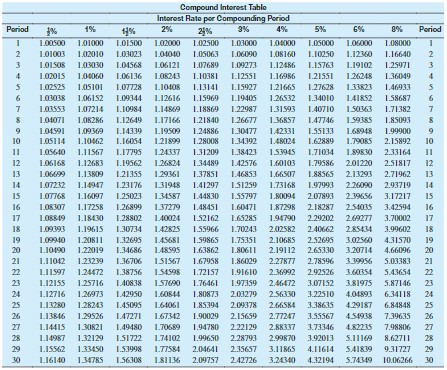Use the total differential dz to approximate the change in z as (x, y) moves from P to Q. Then use a calculator to find the corresponding exact change ?z (to the accuracy of your calculator).4x3y2; P(1, 1), Q(1.01, 0.99)
A. dz = 0.04; ?z = 0.0381920404
B. dz = 0.04; ?z = 0.0391920404
C. dz = 0.03; ?z = 0.0391920404
D. dz = 0.04; ?z = 0.0416920404
Answer: B
You might also like to view...
Evaluate the integral.
A. 23x sin  x - 46 cos
x - 46 cos  x + C
x + C
B. 92 sin  x - 46x cos
x - 46x cos  x + C
x + C
C. 23 sin  x + 46x cos
x + 46x cos  x + C
x + C
D. 46x sin  x + 92 cos
x + 92 cos  x + C
x + C
Use the table to solve the problem. Round to the nearest cent. Jenny Sherrer has $29,000 to invest and believes that she will earn 8% compounded semiannually. Find the compound amounts if she invests for 4 years and for 8 years. Then find the additional amount earned due to the longer period.
Jenny Sherrer has $29,000 to invest and believes that she will earn 8% compounded semiannually. Find the compound amounts if she invests for 4 years and for 8 years. Then find the additional amount earned due to the longer period.
A. $20,390.48 B. $45,675.29 C. $5,762.59 D. $14,627.89
Solve the problem.Rich deposits $1000 into a savings account paying 4% interest compounded annually. At the end of each year he deposits $200 into the account. Let yn be the amount in the account after n years.(a) Find a difference equation satisfied by yn.(b) Solve the difference equation.(c) How much will he have in the account after 6 years?
What will be an ideal response?
Solve.An elliptical bicycle path is constructed in a local park. The equation of the ellipse that represents the path, in yards, is given by  +
+  = 1. What are the length and the width of the bicycle path?
= 1. What are the length and the width of the bicycle path?
A. length: 110 yd; width: 90 yd B. length: 45 yd; width: 55 yd C. length: 55 yd; width: 45 yd D. length: 90 yd; width: 110 yd